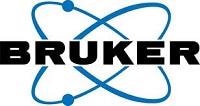Dynamic nuclear polarization (DNP) is a technique used to boost signal intensities in nuclear magnetic resonance (NMR) experiments.
NMR is an essential tool for characterizing structures in materials science and structural biology. However, the technique is limited by its low sensitivity, which poses a particular problem for researchers interested in the characterization of materials’ surfaces.
DNP for Surface Characterization
DNP for Surface Characterization from AZoNetwork on Vimeo.
At the Institute of Analytical Sciences in Lyon, France, scientists working in the High Field NMR Center have recently been using DNP to enhance NMR signal intensities and scrutinize materials’ surfaces at the atomic level.
In an interview with News Medical, leader of the group, Dr. Anne Lesage, explained the principals of DNP and how she hopes the technique can be used to push technology at high magnetic fields, to enhance solid-state NMR spectroscopy and benefit the world of materials science.
The properties of many modern materials are strongly related to the atomic structure of their surface entities and for researchers to improve the performance of such materials, this relationship needs to be understood. This means determining the structure of the surface species. The problem with NMR having a low sensitivity, however, is exacerbated when researchers study materials’ surfaces, because the surface species are diluted.
The low sensitivity of NMR is due to the small magnetic moment of the nuclei being studied, which results in small polarization of the nuclear spin reservoir and small signal intensities. In the magnetic field, the electron spin reservoir is much more polarized than the nuclear spin reservoir. Lesage explained that what DNP does, is transfer this much larger polarization from unpaired electrons, to the surrounding nuclei. This dramatically enhances the signal intensity, which is of huge benefit in terms of scrutinizing surfaces at the atomic level.
The protocol using DNP would involve introducing inside the sample a polarizing solution that contains the unpaired electrons, so without diluting the material. We do that using the incipient wetness impregnation approach, which consists of adding a couple of drops of this polarizing solution to the material. Then, upon microwave radiation, we transfer the polarization of these electrons to the nuclei of the solvent and then, by proton spin diffusion, to the surface.
Currently, the team work with two DNP-NMR spectrometers supplied by Bruker. One operates at 9.4 Tesla and one at 18.8 Tesla, corresponding to 400 and 800 MHz proton frequencies, respectively. It is the 400 MHz system that the researchers use for all applications and also for pushing the frontiers in terms of developing new polarizing sources and introducing novel NMR methods. Lesage says that with the 400 MHz system, the team can achieve excellent enhancement and amplify the NMR signal by up to two orders of magnitude: “This corresponds to a gain in experimental time by four orders of magnitude, compared to conventional NMR.”
The high-field 800 MHz is used in a far more exploratory way because the enhancement factors are greatly reduced at this high field, compared with the 400 MHz system, typically by a factor of four. The challenge the researchers face is therefore the development of polarization sources that will be targeted at very high field. There are many applications where high-field DNP would be essential including quadrupolar NMR, proton NMR, looking at biomolecules and any application in structural biology where the resolution is insufficient at 9.4 Tesla.
Lesage went on to explain the impact she thinks DNP will have on the characterization of materials’ surfaces. She described how the team are now able to determine the full 3-D structure, atom-by-atom, of a surface species. Being able to see dilute surface entities in materials is an essential, revolutionizing step, she says, because if you can understand the structure of the active surface species at an atomic level, then you can relate that structure to the material’s properties: “ I really think that the potential of DNP enhanced solid-state NMR spectroscopy will be extremely huge for materials science, because, for the first time, with such instrumentation, we have the capability of scrutinizing, at atomic resolution, dilute species that were previously unobservable.”
Lesage also pointed out the potential of DNP in the pharmaceutical field: “You can use NMR to investigate with high sensitivity, formulations, without modifying them, by gently grinding the tablets and impregnating with the polarizing solution the microparticle.” Since such high enhancement factors of the NMR signal can be achieved, it becomes possible to characterize the active pharmaceutical ingredient (API) in great detail.
Commenting on how accessible DNP is expected to be in the future, Lesage says that the developments will enable the introduction of lower cost systems, making DNP more widely available to both industry and academia.

For more information on this source, please visit Bruker BioSpin - NMR, EPR and Imaging.
Disclaimer: The views expressed here are those of the interviewee and do not necessarily represent the views of AZoM.com Limited (T/A) AZoNetwork, the owner and operator of this website. This disclaimer forms part of the Terms and Conditions of use of this website.